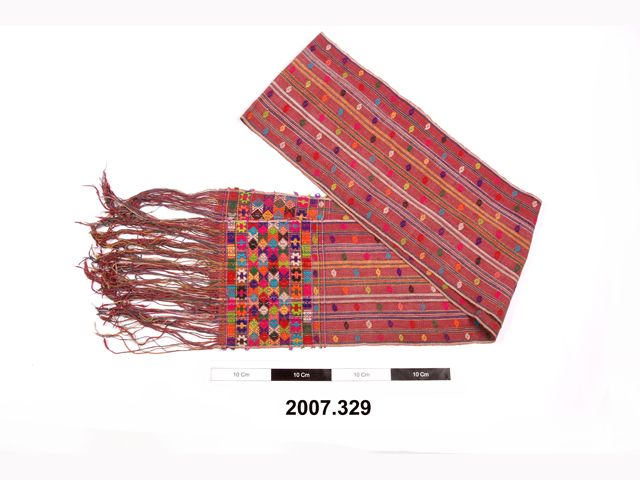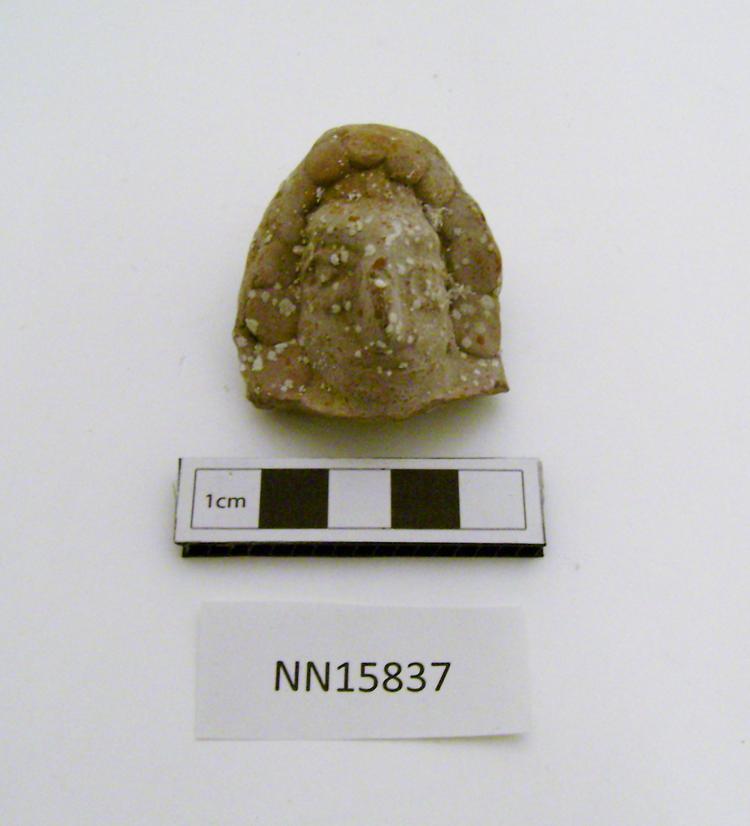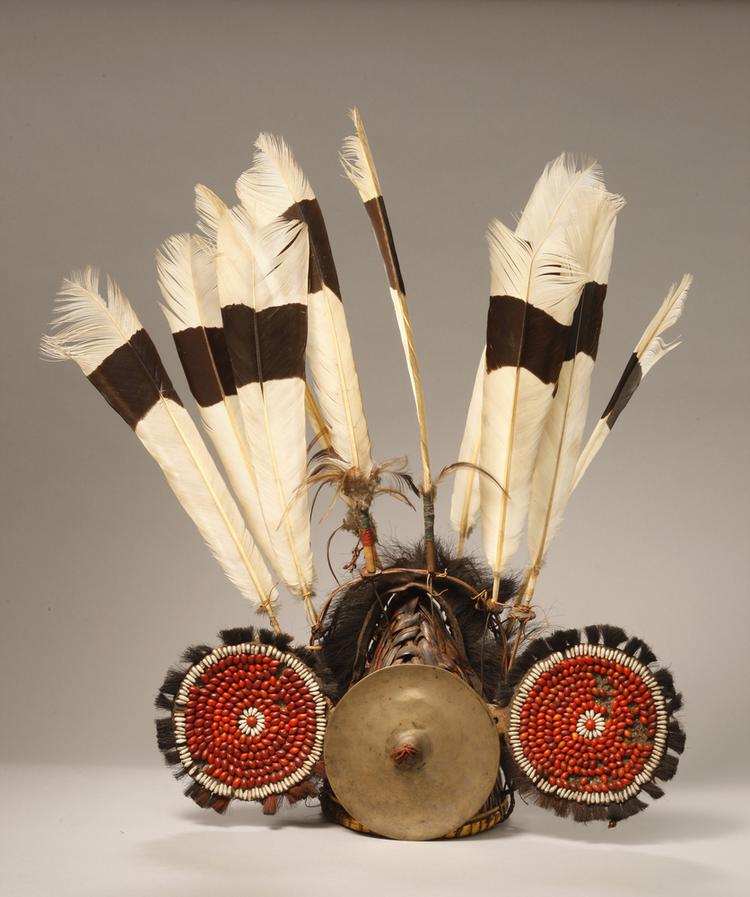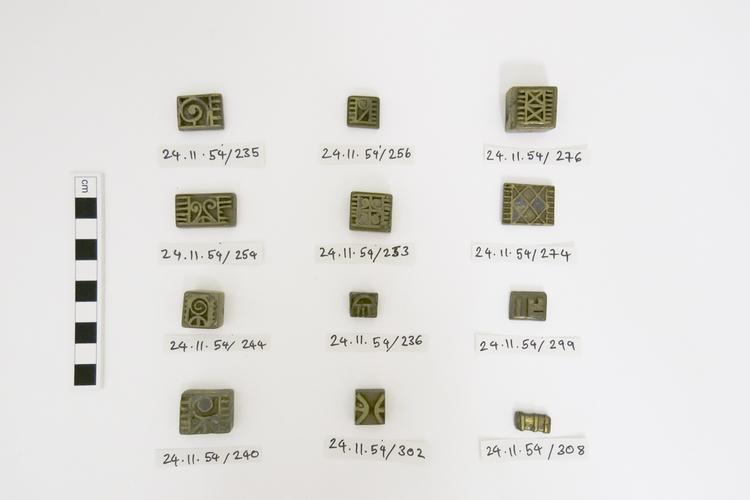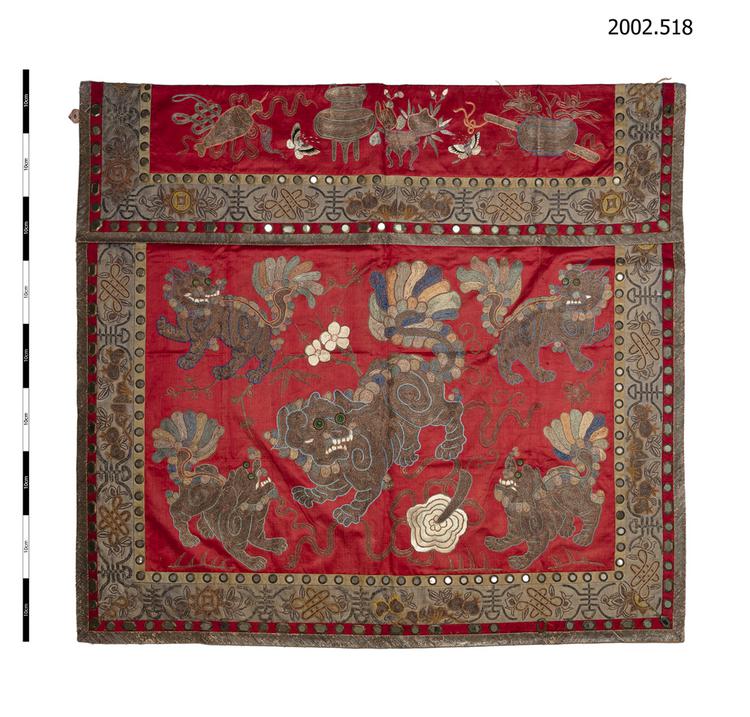
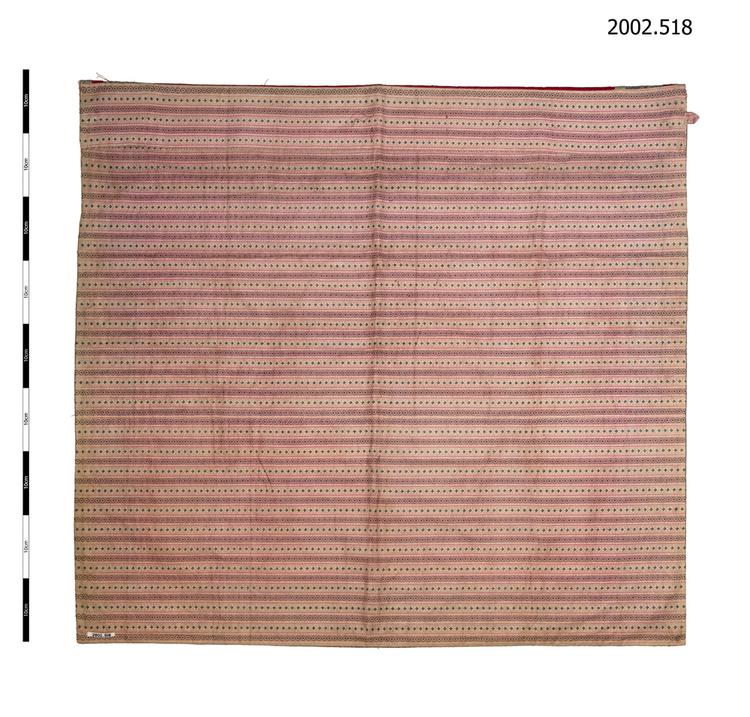
Rectangular altar frontal. Red satin ground with designs in couchwork embroidery in metal thread. The design is divided into a main rectangular panel, more or less square, with a narrower panel or valance above. In the main panel is large lion surrounded by four smaller ones, with plum blossom in the bacground and a motif representing an embroidered ball. The lions are outlined in shades of blue or green and filled in with gold-coloured metal-wrapped thread. All have brass eyes with a green glass centre. The centre of the valance has a three-footed container, a motif combining a Buddha's hand, a peach and a pomegranate, the Three Fruits, flanked by two butterflies. On the far left is a vase, with ribbons, a fly whisk and an endless knot. On the right is another container, with behind it a rod, possibly representing a flute. Both centre panel and valance have borders on three sides, in a satin fabric which was once a deep blue, still visible in areas not exposed to the light. Both have alternating pomegranate and endless knot motifs and there are many circular cash deisgns and some hexagonal shaped mirrors and a fabric with metal strip cut on the diagonal at the edge. The textile is lined with a small-scale pink and black printed design on a white cotton ground. The top of the lining is folded over and stitched, forming a sleeve and a fabric loop is stitched to the left hand edge.



